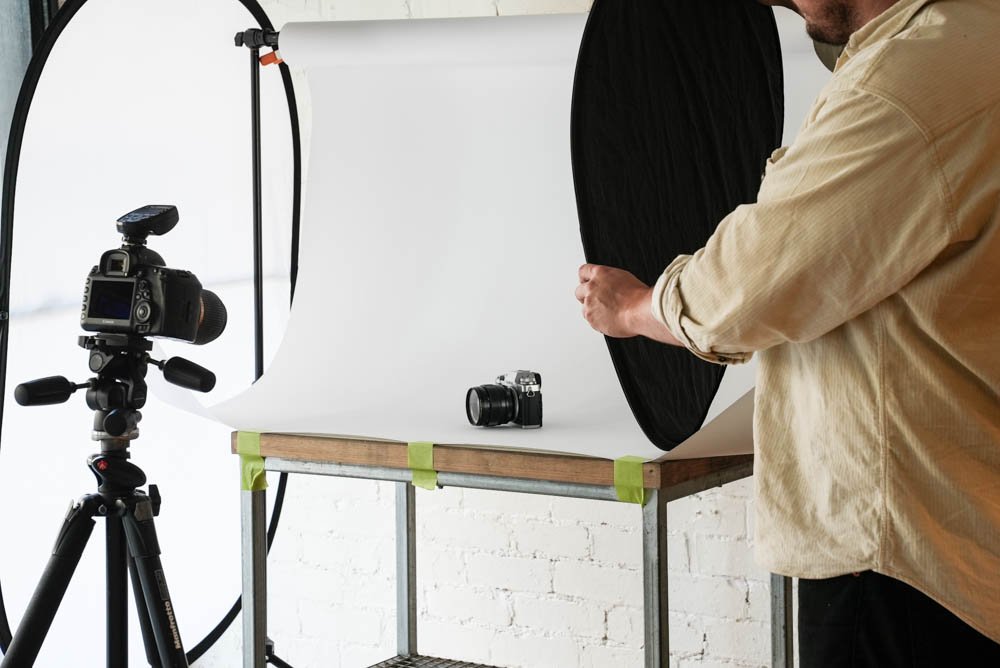Resources
Sony HVL-F60RM II vs Mark I: Which Flash Should You Hire?
Thinking of upgrading or hiring a Sony flash? In this post, we break down the key differences between the Sony HVL-F60RM Mark I and the newer Mark II. From faster recycle times to improved heat resistance, find out whether the Mark II is worth the hire — and which model best suits your next shoot.
What is the Exposure Triangle?
The Exposure Triangle illustrates the relationship between three aspects of a camera’s controls which together adjust the overall exposure of a photograph. These three variables are “shutter speed”, “aperture” and “ISO”.
Sandra asks: “Why don’t my photos of my AirBNB look any good?”
Sandra shoots mostly family portraits in the studio and on location, but when asked by a relative to take some photos of their AirBNB property, she was floored by the problems she was encountering in her pictures and her client was not happy. The answer to this problem involves Linear Perspective and Exposure Bracketing.
How to choose between continuous lights and strobe lights
Lighting for photography and videography can be divided into two types: lights that flash on and off once called “strobes” or “flash”, and there lights which are continuously on, aptly named “continuous” or “constant” lighting. As a beginner, or even as an avid natural light photographer, choosing the right kind of light for your project or job can be a little daunting or even intimidating, so let’s break it all down into some digestible components.
Troubleshooting On-Camera Flash
Answers to why: My flash won’t fire… My flash is too bright or too dark… My flash is unflattering… My batteries are running out too quickly… My flash is taking a long time to recycle… The colour of my photos is unnatural…There are ugly shadows behind my subjects
Shooting Indoors with Flash for Events
When first bouncing flash, many people will bounce the light straight up off the ceiling. This works to create a softer light source, however it creates a look called ‘panda eyes’, resulting in circular shadows over the subjects eyes. There are a couple of solutions to fix this. In a smaller room, rather than pointing the light straight up, the best place to bounce light is off both the ceiling and wall behind the photographer.
Shooting Outdoors with Flash for Events
For outdoor events or in huge function halls, the choices are limited for a photographer. Using a front-facing flash maybe the best option, or using a diffusing modifier can help.
TTL and Manual Flash Modes
While using automatic mode on your flash and camera will yield good results for a majority of the time, there is the potential to get better results by having manual control over some settings. The mode we choose will determine if the brightness of the flash will be controlled by you or the camera.
The Flash Compensation System
Using the flash compensation dial or buttons on the flash is the fastest way to adjust your exposure without adjusting any of your camera settings.
Working with Ambient Light and Flash Photography
In event environments, exposure comes down to some personal taste and it isn’t uncommon for photographers to have different approaches to choosing their settings. Here are suggestions are a good place for beginners to start:
Using Off-Camera Flash
The term ‘off-camera flash’ can strike fear in the hearts of beginner photographers, however taking the flash off the camera’s hotshoe doesn’t need to involve a complicated setup or a lot of equipment.
Setting Your White Balance for Flash Photography
The easiest way to set white balance for flash photography is to turn your white balance from Automatic to Manual and choose the in-camera profile for flash photography, generally represented as a lighting bolt symbol.
Shutter Speed and the Quirks of Flash
Many photographers are likely familiar with the three factors that contribute to exposure in-camera: shutter speed, aperture and ISO. We use these same settings when calculating our exposure for our ambient/flash mix, however shutter speed has some unique properties when using flash photography.
Using Correction Gels with On Camera Flash
Correction gels can be useful for balancing out the colour of ambient lighting in a room. They can also be used for more advanced creative lighting techniques.
White Balance, Flash & Skintones
The flash white balance mode is commonly automatically set for many models of cameras when used in conjunction with an automatic flash power mode (such as TTL). The camera varies its recorded white balance based on the colour information it receives during the flashes initial fire.
Getting Started with the Epson Perfection V800 Scanner
If you’re using the Epson V800 scanner for the first time, read through this guide to get the equipment and software set up
Comparing Flash and Natural Light: Simple Product Photography (Part 3)
Producing fantastic product photos is essential for any small business. This guide is the third of a three part series on product photography, and compares the results from part one (using natural light) and part two (using flash).
Using Flash: Simple Product Photography (Part 2)
Producing fantastic product photos is essential for any small business. This guide is the second of a three part series on product photography, and covers how to capture an image using a simple flash setup for a nice, clean look.
Using Natural Light: Simple Product Photography (Part 1)
Producing fantastic product photos is essential for any small business. This guide is the first of a three part series on product photography, and covers how to setup a shoot using natural light for a clean and simple look.




















